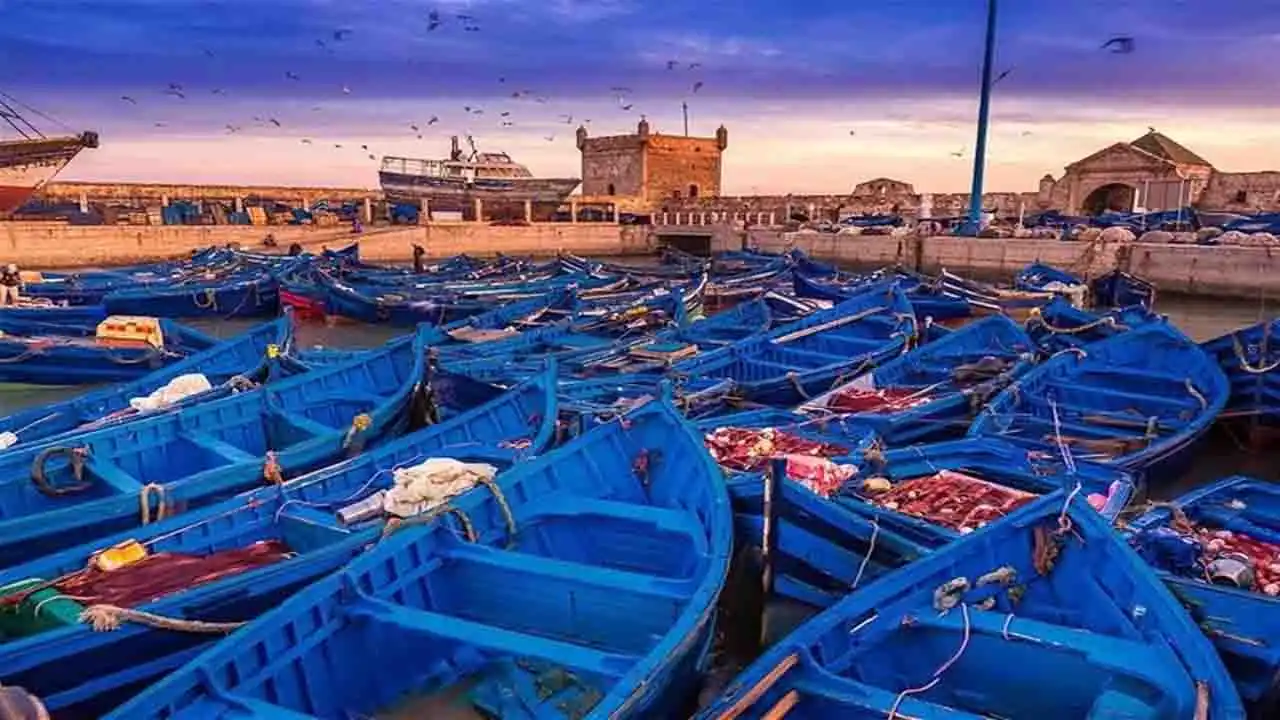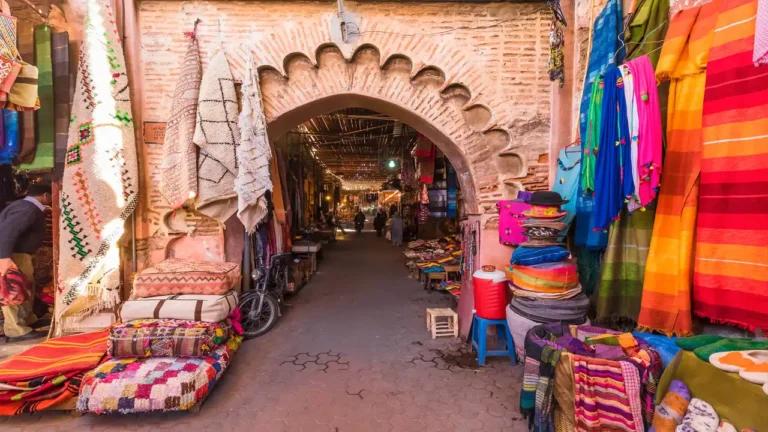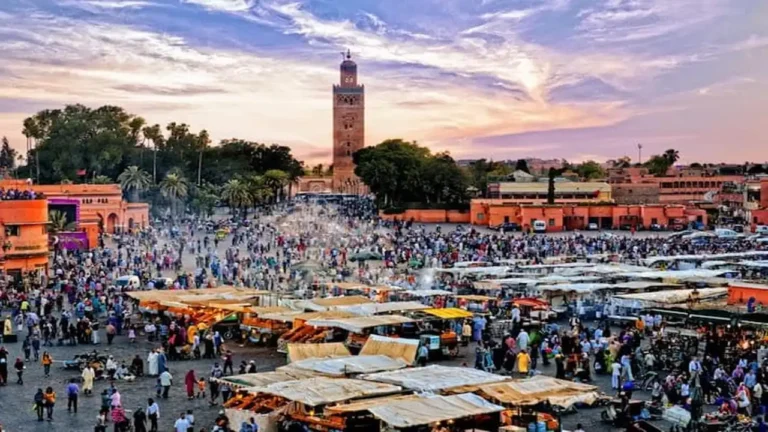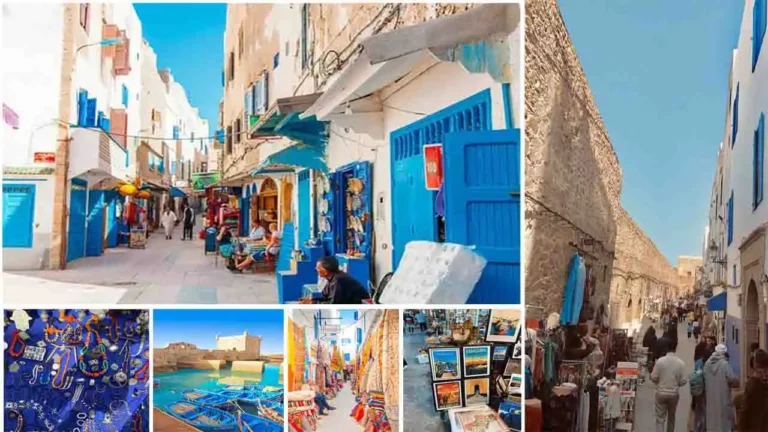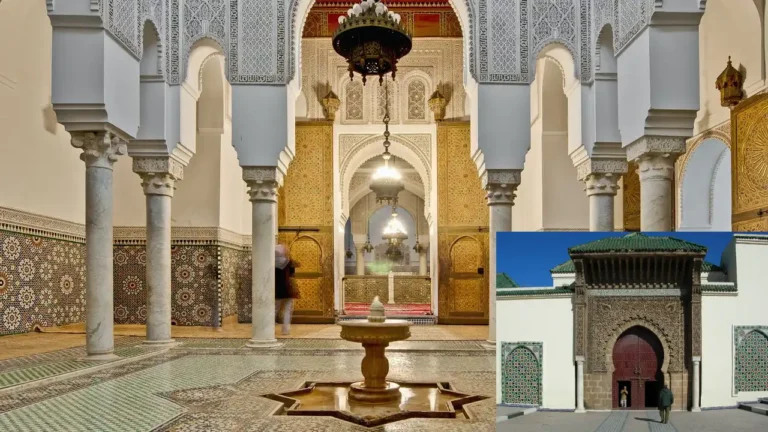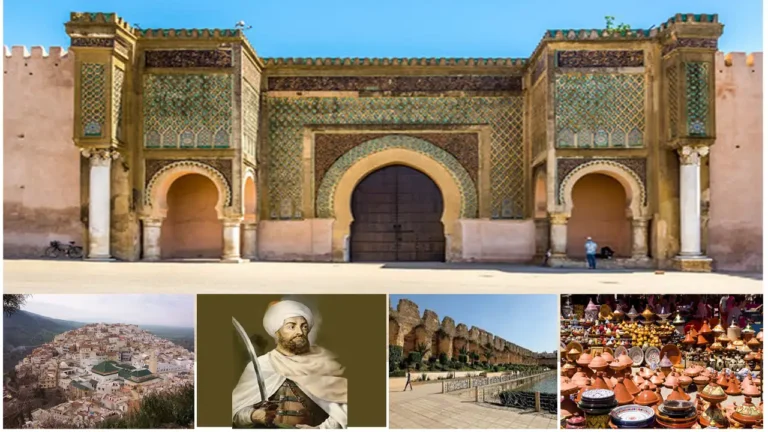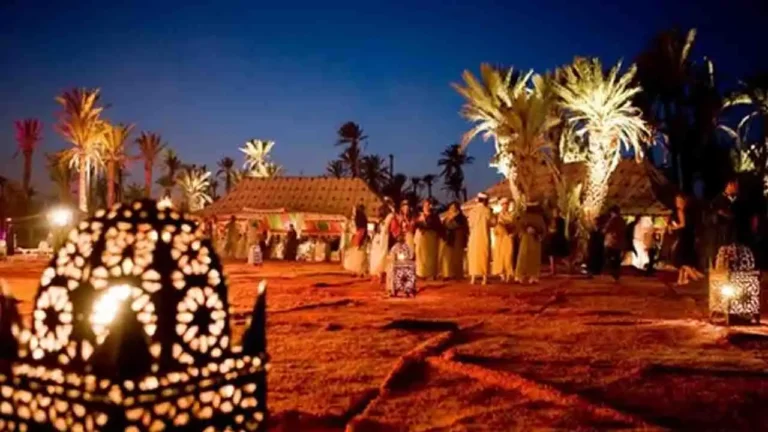Top 15 Things to Do in Essaouira
Essaouira isn’t just a place—it’s an atmosphere, a rhythm, a whisper of salt in the air that clings to your skin as the Atlantic crashes against timeworn stone. This is where Morocco slows down, where life moves to the sway of the tides and the pulse of Gnawa drums, where seagulls weave circles above the fishing boats, waiting for their share of the daily catch.
Step inside the UNESCO-listed medina, and Essaouira reveals itself in layers. Sun-bleached alleyways twist and turn, spilling into hidden courtyards, souks brimming with silver jewelry, and cafes where old men sip tea as if time itself has stalled. The scent of grilled sardines mingles with cedarwood shavings from an artisan’s workshop. It’s not chaos—it’s harmony.
Venture beyond the ramparts, and the world opens wide. Wild beaches, rolling dunes, windsurfers slicing through the waves, and the golden expanse of Sidi Kaouki, where camels tread the shoreline at sunset. Essaouira doesn’t demand your attention; it lulls you in, slow and deep.
Now, let’s dive into the 15 best things to do in Essaouira—the ones that linger long after you’ve left.
Table of Contents
1. Wander Through Essaouira’s Medina
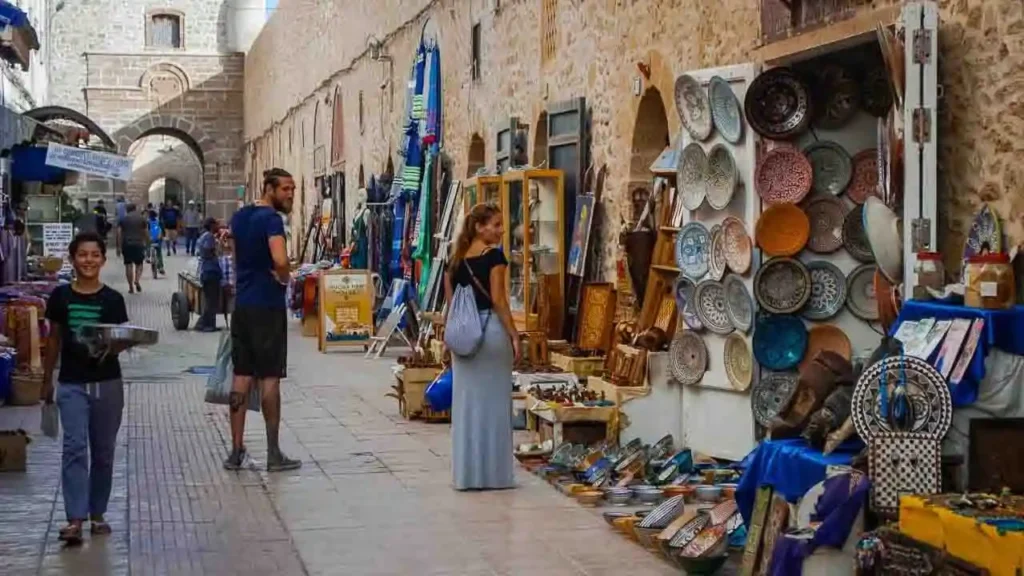
Essaouira’s medina isn’t just a place—it’s a labyrinth of stories, history, and slow-burning magic. Unlike the high-intensity souks of Marrakech, here the streets breathe. Sunlight bounces off whitewashed walls with indigo trims, casting a glow on cobblestone paths where artisans hammer silver into delicate filigree and the scent of freshly baked khobz drifts through the air.
Lose yourself in the maze—not in a rush, but with curiosity as your guide. One turn leads to a spice merchant crushing saffron between his fingers, another to a tiny bookstore stacked with forgotten French and Arabic manuscripts. Step into a hidden courtyard, where blue doors contrast against warm ochre walls, or find yourself in a backstreet where a craftsman chisels intricate thuya wood treasures, their scent filling the air with a rich, earthy aroma.
At the heart of it all, Essaouira’s souks unfold like an endless, slow-moving play. Handwoven rugs, antique silver, baskets brimming with dates and almonds—each item tells a story. But here, shopping is never just about buying—it’s about the ritual, the conversation, the moment.
Wandering the medina isn’t an activity. It’s an immersion. Let it unfold at its own pace.
2. Walk Along the Skala de la Ville
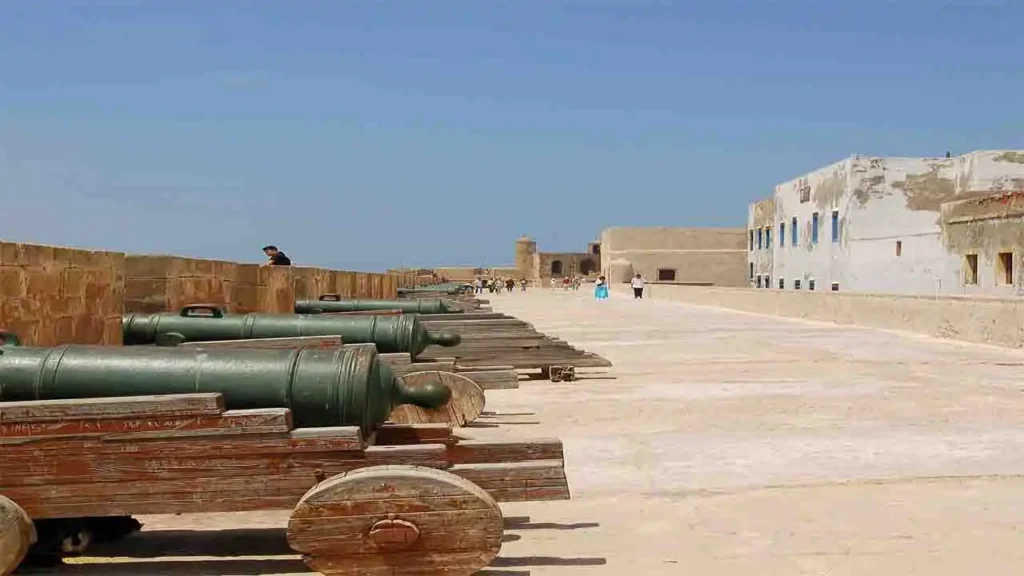
The Atlantic crashes wildly below, hurling itself against Essaouira’s ancient walls, a battle that has raged for centuries. Skala de la Ville stands firm—weathered, unmoved, its stone ramparts thick with the weight of history. This isn’t just a viewpoint. It’s a watchtower of time, where cannon-studded bastions whisper stories of pirates, sultans, and sea-worn traders who once navigated these treacherous waters.
Walk the edge. The wind howls. The air is thick with salt. Below, waves explode against the rocks, white spray curling like dragon’s breath. Seagulls hover, suspended in the updraft, waiting for the sea to offer its spoils. The medina murmurs in the background—faint chatter, the clang of a blacksmith’s hammer, the distant wail of a Gnawa melody spilling from a hidden café.
And then, the sky ignites. Sunset transforms Skala into something surreal—bronze cannons glowing gold, shadows stretching long, the ocean swallowing the sun in a slow, smoldering gulp. It’s a moment that etches itself deep, a memory that lingers long after you’ve left the walls behind.
Essaouira moves fast—but here, time stands still.
3. Relax on Essaouira Beach
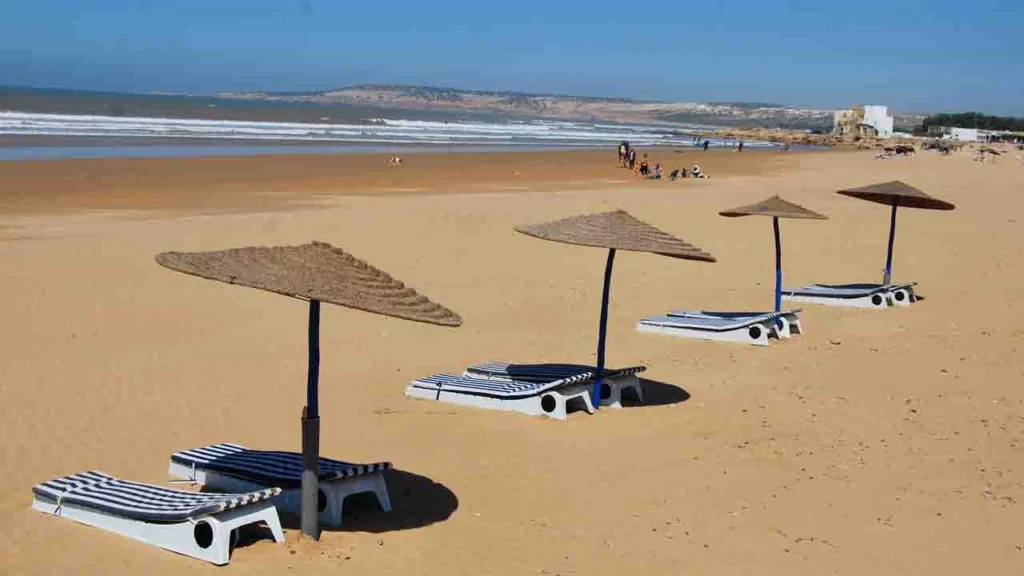
Essaouira’s beach isn’t your typical sunbather’s paradise—it’s wild, untamed, electric with movement. The Atlantic stretches wide, rolling in with a rhythmic pulse, its waves carving endless patterns into the soft golden sand. The wind never stops—it dances through the dunes, ripples across the water, and fuels the colorful kites that dot the sky like restless birds.
This is a place for long, unhurried walks, where the horizon feels infinite, where footprints vanish almost as soon as they’re made. Camels and horses tread lazily along the shoreline, their riders silhouetted against the shimmering spray. Fishermen wade into the shallows, casting their lines with the patience of men who know the sea better than time itself.
And then there’s the energy—the kitesurfers slicing through the waves, windsurfers leaning into the gusts, their sails snapping taut against the Atlantic’s roar. Essaouira Beach isn’t just for resting. It’s for feeling alive.
At sunset, everything slows. The sky burns amber, the tide sighs, and the world exhales. Sit back, bury your toes in the sand, and let Essaouira’s rhythm pull you under.
4. Try Kitesurfing or Windsurfing
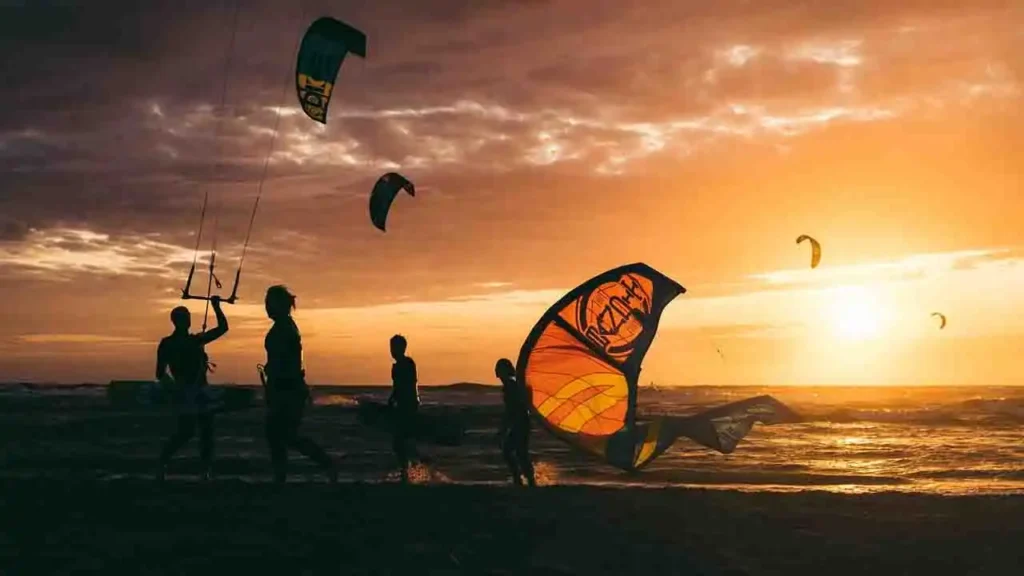
The wind here doesn’t whisper—it shouts. Essaouira’s lifeblood is motion, a restless, untamed force that sweeps across the Atlantic and slams into its shores, shaping the very rhythm of life. It bends palm trees, sculpts shifting dunes, and fuels an addiction—one that grips kitesurfers and windsurfers the moment they step onto the sand.
Look up. A swarm of kites twists and dives, slashing across the sky like bursts of color against the endless blue. Below, riders skim the surface, carving white trails into the rolling swells, the wind yanking them forward with exhilarating, unpredictable force. Some catch air—they hover, weightless, bodies suspended between sea and sky for a single impossible moment—then drop, swallowed whole by the Atlantic’s churning embrace.
New to the game? Essaouira’s surf schools line the shore, ready to launch you into the madness. No experience, just raw instinct and the pull of the wind. And even if you never grab a board, the show is mesmerizing—a dance of chaos and control, man versus nature, and nature always, always calling the shots.
5. Visit the Essaouira Fishing Port

The air hits you first—thick with salt, seaweed, and the sharp tang of fish, fresh and unfiltered. Then comes the sound: the chaotic symphony of squawking seagulls, shouting fishermen, the rhythmic clatter of boats knocking against the dock. Essaouira’s port isn’t quiet. It isn’t polished. It’s alive.
Before the sun fully wakes, the scene is already in motion. Men in sun-bleached djellabas haul in their nets, silver-scaled sardines flopping in frantic unison. A swordfish—its blade still gleaming, its fate long sealed—is dragged across the damp stone, a knife already carving its future. Buckets of writhing eels slosh beside heaps of prawns, their shells still pulsing with ocean memory. A deal is struck—a nod, a few words, dirhams flash, and just like that, the sea changes hands.
Walk past the docks, where the legendary blue boats sit shoulder to shoulder, paint chipping, ropes tangled like veins feeding the city. This is no tourist show—this is Essaouira’s pulse, raw and beating. If you linger too long, a fisherman might shove a live crab into your hands with a grin, daring you to hold on as it fights for the freedom it will never win.
Step further, and the scent shifts—charcoal smoke, sizzling fish, the unmistakable smell of fire meeting flesh. Grills burn hot, spitting oil as whole seabass and calamari curl over the flames. No menus. No frills. Just pick your fish, hand over a few dirhams, and eat with your fingers.
And if you glance at the docks again, you’ll see them—the stray cats, tails twitching, waiting. They don’t beg. They know the rules. The fishermen will feed them, as they always have.
Essaouira’s port doesn’t perform for visitors. It exists, fiercely, unapologetically.
6. Savor Fresh Seafood at the Port
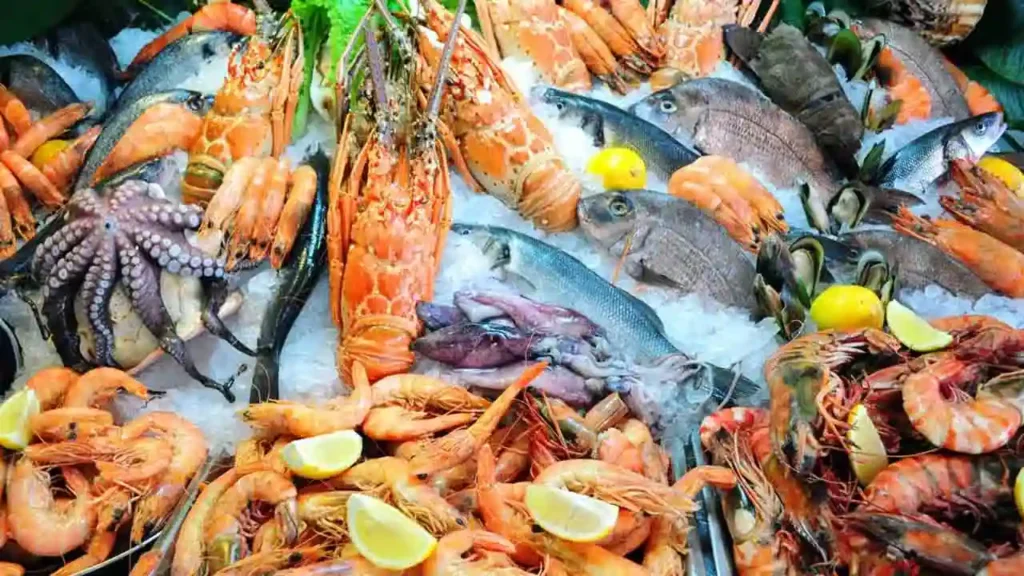
Forget white tablecloths and polished silverware. Essaouira’s seafood scene is fire, salt, and instinct. Here, meals don’t come with a garnish—they come straight from the ocean, still dripping, still smelling of the tide.
Step into the open-air stalls near the fishing port. No signs, no fancy menus—just rows of seafood laid out on ice, glistening under the sun. Sardines, sea bream, prawns, calamari—some caught minutes ago, others still twitching, unaware their fate is sealed. Point at whatever calls to you, hand over a few dirhams, and watch as your meal is thrown onto a searing-hot grill. Flames leap. Oil spits. The smell is intoxicating.
The vendors work fast, flipping fish with bare hands, squeezing on fresh lemon, sprinkling nothing but salt. No sauces, no tricks—just seafood at its purest, kissed by fire, charred at the edges, bursting with ocean intensity.
You sit at a plastic table, the kind that wobbles slightly. Plates arrive with no ceremony—just grilled fish, warm bread, and a side of tomato-chili sauce that bites back. You tear into the flesh with your fingers, ignoring the cutlery, licking salt from your lips. A stray cat watches from the shadows, waiting for a scrap.
Around you, conversations swirl in Darija, French, Spanish. A fisherman laughs with a tourist. A local shakes his head knowingly at an overambitious traveler tackling a whole crab. There’s no rush, no pretension—just the kind of meal that lingers on your tongue long after you’ve left the city.
Essaouira’s seafood isn’t just food. It’s the ocean on a plate, fire in your hands, salt in your blood.
7. Explore the Jewish Quarter (Mellah)
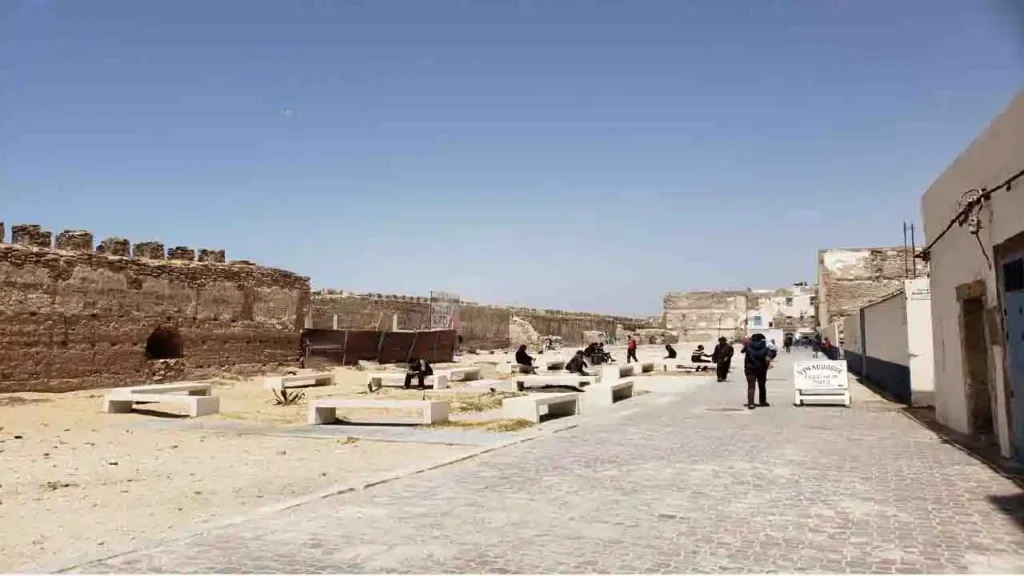
Step into Essaouira’s Mellah, and the air shifts. The past lingers here—not in ruins, but in whispers. Faded Star of David carvings still mark old doorways, their edges worn smooth by time. Blue shutters, chipped and sun-bleached, creak lazily in the Atlantic breeze. The streets are quieter, narrower, filled with a different kind of energy—a memory of a community that once thrived, traded, prayed, built.
Essaouira was once a city of many names—Mogador, the Port of Timbuktu, the Free City. A place where Jewish merchants and Muslim craftsmen worked side by side, where synagogues stood near mosques, where goldsmiths, tailors, and traders shaped the city’s pulse. Today, that legacy remains, woven into the walls, the stories, the old synagogues tucked away in hidden corners.
Visit Slat Lkahal, an 18th-century synagogue, its white-and-blue interior a quiet refuge in the heart of the medina. Or step inside the restored Simon Attia Synagogue, where light filters through stained glass, casting soft colors onto stone floors. These aren’t just relics—they’re echoes of a time when Essaouira’s Jewish population was nearly half the city.
Wander further, and you’ll find remnants of the old Jewish souks, where merchants once sold silk, silver, and spices. Today, the energy has shifted, but traces of the past remain. A Hebrew inscription above a doorway. A mezuzah outline in the stone. A silence that feels like remembrance.
Essaouira’s Mellah isn’t frozen in time—it’s a living fragment of history, layered, complex, waiting to be felt.
8. Experience Traditional Gnawa Music
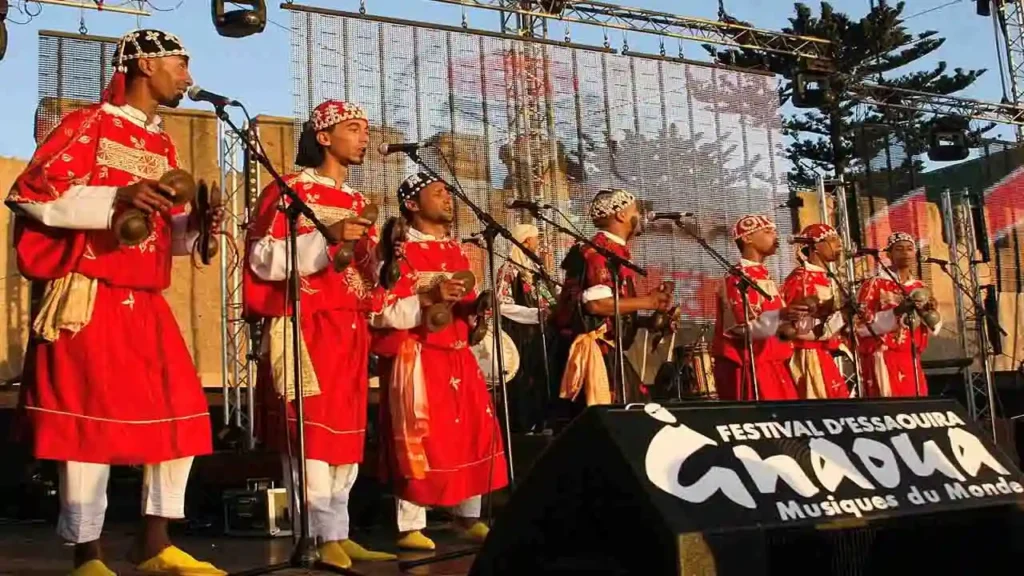
It starts slow—a deep, low vibration thrumming through the air, like the first rumbles of a distant storm. Then, the krakebs—iron castanets—clatter into motion, sharp and metallic, slicing through the silence. A voice rises, ancient and unshaken, weaving a call that pulls the past into the present. Gnawa music doesn’t ask for your attention. It takes it.
Essaouira is its beating heart. Born from the depths of West African mysticism, shaped by centuries of exile, trade, and trance, Gnawa is not just a sound—it’s a portal. A rhythm that grips you, body first, then deeper, tunneling into the spaces words don’t reach.
Step into a dimly lit zaouia, where musicians sit in a half-circle, lost in the sound they conjure. The guembri—that deep, three-stringed bass-lute, thick and resonant—growls beneath the chant, anchoring the storm. Krakebs rattle like chains shaking loose from time itself. The music builds, faster, wilder. Eyes close. Feet stomp. Hands clap. The trance takes hold.
Then there’s the festival—Essaouira’s great eruption. Every June, the Gnawa World Music Festival transforms the city into a swirling, ecstatic mass of sound. Fusions with jazz, blues, reggae—the pulse of Africa colliding with the rest of the world, raw and electric. The music spills into the streets, onto the rooftops, into the waves. The night stretches long, stretching you with it.
You don’t simply hear Gnawa. You surrender to it.
9. Discover Sidi Kaouki Beach
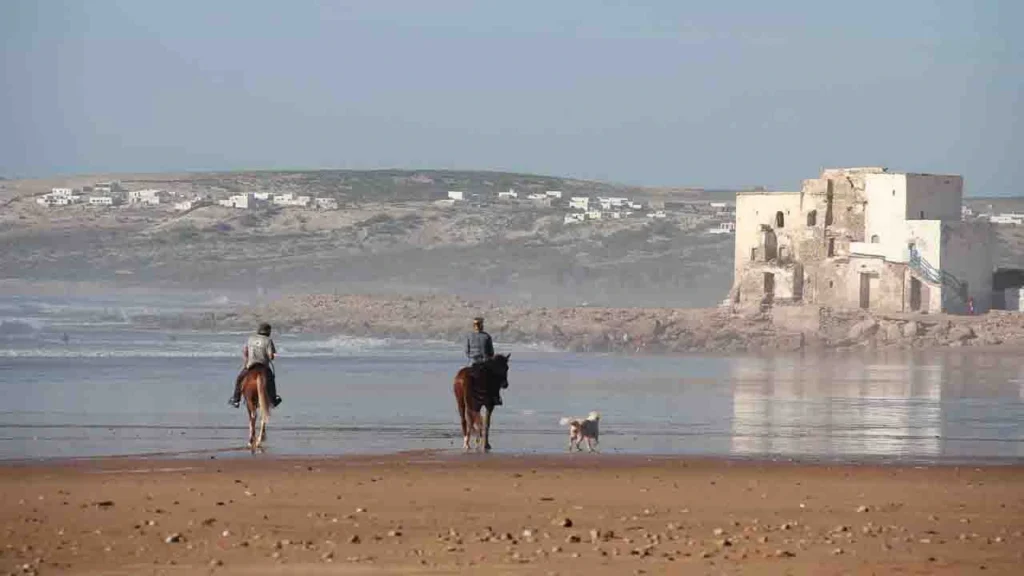
The road disappears behind you, swallowed by the wind. Everything ahead is vast, raw, untamed. The sky yawns wide, stretching beyond sight, while the Atlantic growls in the distance, restless, eternal. This is not a postcard beach. This is something wilder.
The wind never stops here. It carves the dunes, bends the argan trees into twisted sculptures, carries the scent of salt and fire. The ocean slams against the shore, not in gentle waves, but in towering walls of water—relentless, untamed, as if the sea itself is trying to reclaim the land.
Camels move slowly along the tide’s edge, their silhouettes dark against the burning sky. A horse, untethered, bolts through the shallows, kicking up sprays of silver. Further out, a surfer waits—motionless, patient, reading the Atlantic like an old book.
There are no luxury resorts here. No polished sun loungers or frozen cocktails. Just wooden shacks with fresh fish grilling over open flames, tables dusted with sand, locals who measure time by the wind, not the clock.
And then, sunset. The sky ignites—gold, then crimson, then deep indigo. The wind howls. The waves roar. And standing there, barefoot in the cooling sand, something shifts. You don’t just see Sidi Kaouki. You feel it.
Some places you visit. This one stays with you.
10. Visit the Sidi Mohammed Ben Abdallah Museum
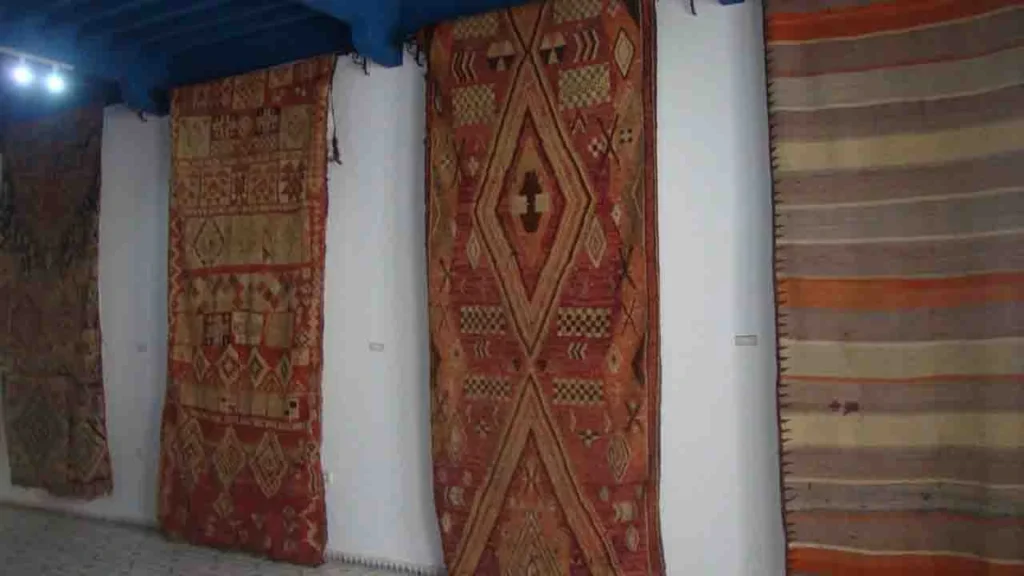
Step inside, and the world outside fades. The crash of the Atlantic, the wind tunneling through Essaouira’s streets—it all melts away into the hush of stone walls that have stood for centuries. The Sidi Mohammed Ben Abdallah Museum isn’t just a collection of artifacts. It’s a portal. A whispered conversation between past and present.
Housed in an 18th-century pasha’s mansion, its thick, ochre walls hold echoes of an Essaouira few remember. Delicate Berber jewelry, ancient Korans with timeworn pages, ceramics glazed in deep cobalt blues—all arranged like puzzle pieces, fragments of a city that has always been a crossroads.
You move slowly, tracing the history through objects left behind. A gnawa musician’s guembri, its strings worn from years of trance-inducing melodies. A weathered maritime map, lines drawn by hands long turned to dust. A rusted Portuguese musket, proof that Essaouira was once a battlefield as much as a sanctuary.
The air smells of cedarwood, of dust stirred by footsteps. A narrow window lets in a shard of golden light, illuminating the script of an old manuscript—handwritten, precise, untouched by modern hands. Time feels fragile here.
This isn’t a museum that shouts for attention. It doesn’t dazzle with interactive screens or polished exhibitions. It hums. It lingers. It leaves you standing in the middle of a quiet room, staring at a centuries-old artifact, wondering about the hands that last held it.
Essaouira has always been a meeting point—Berber, Arab, Jewish, European, African. And here, in these hushed halls, you begin to understand just how many stories have passed through this place, how many still remain, waiting to be heard.
11. Take a Sunset Horse or Camel Ride
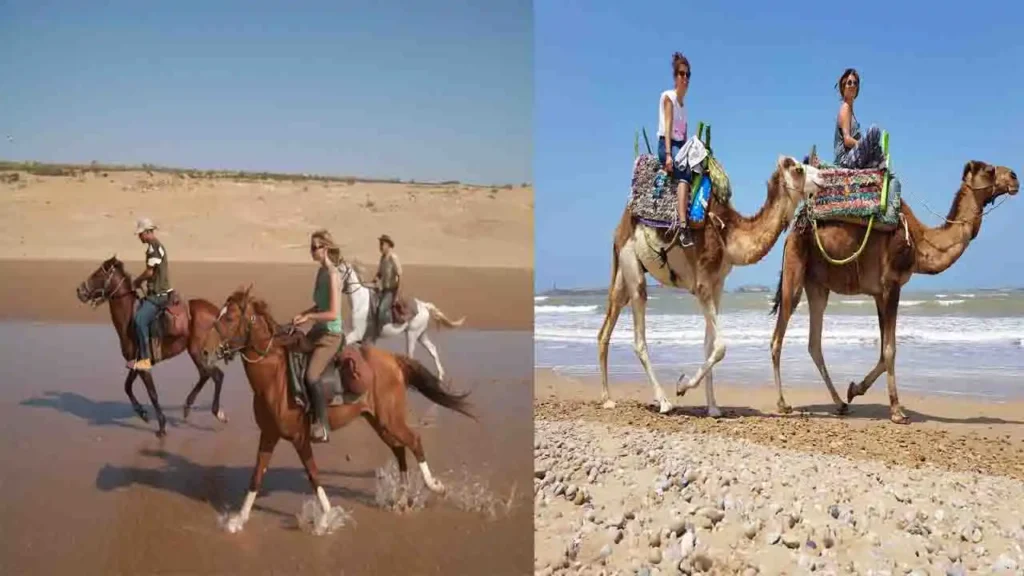
The light fractures—gold liquefies into deep amber, crimson streaks burn the sky, the Atlantic swallows the last sliver of sun. The air hums with salt, fire, and the faintest whisper of something unspoken. The wind—no longer wild—moves like a ghost, curling around dunes, tracing the edges of footprints that won’t last till morning.
The saddle beneath you groans. A horse, restless, shifting, its muscles tensed like a coiled spring. A camel, steady, ancient, unmoved by time. You grip the reins, and then—motion.
If you’re on horseback, the world unspools in a blur. The beach becomes endless, hooves hammering the sand, wind tearing past your face, the raw, reckless joy of speed drowning out thought. If you chose the camel, the sway is hypnotic, as if the past and present have fused, as if you’re no longer moving forward but slipping into another rhythm entirely—one older than roads, older than time.
Somewhere behind you, a fire cracks. The scent of grilled sardines curls through the air, mingling with the damp, electric charge of nightfall. A lone figure sits by the embers, silhouetted against the last streak of daylight, watching the tide creep in.
For a moment, you don’t think. You don’t plan. You don’t even breathe. You just are.
Then, the ride slows. The world exhales. You dismount, feet sinking into the cooling sand, the ocean still whispering secrets to the shore.
Essaouira doesn’t ask you to remember it. It dares you to forget.
12. Explore the Local Art Scene
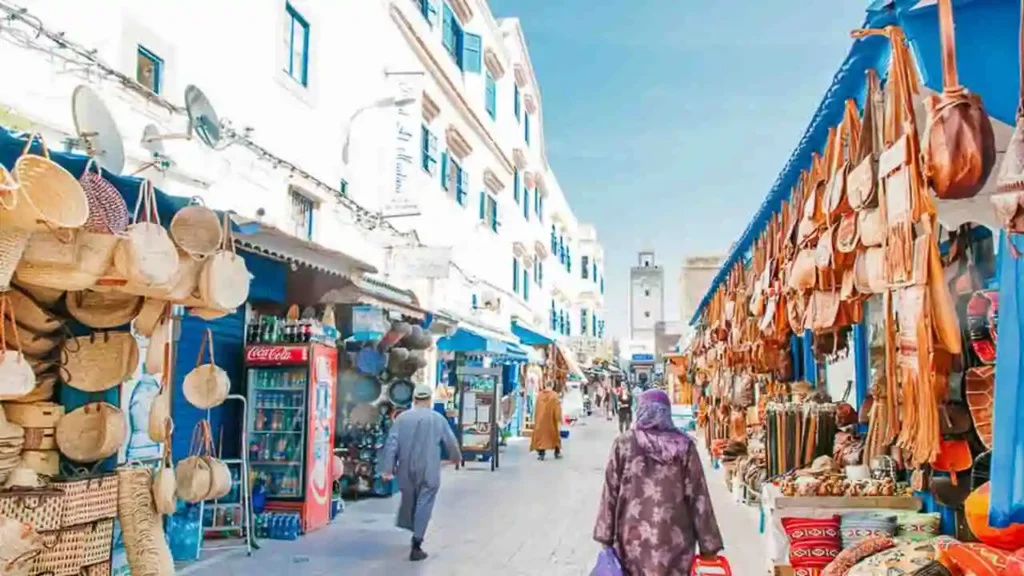
Essaouira doesn’t just inspire art—it breathes it. The wind sculpts the dunes, the sea paints the sky, and the medina itself—with its sun-faded blues, its cracked white walls, its maze of shadow and light—is a canvas in motion.
Step into the galleries, tucked behind wooden doors that creak with age. Thick brushstrokes capture the chaos of the ocean, the solitude of the desert, the rhythm of Gnawa music in bold, hypnotic patterns. Some pieces feel alive, vibrating with color, others whisper in soft pastels—stories trapped in pigment, waiting for the right eyes to set them free.
At Galerie d’Art Damgaard, the walls pulse with the raw, untamed spirit of Moroccan expressionism. Self-taught artists pour Essaouira’s soul onto canvas—swirling blues, chaotic reds, faces and forms that blur between dream and reality. Down another alley, you’ll find L’Atelier—where the energy shifts, where delicate sketches of medina life sit beside sculptures that feel almost ancient.
And then there’s the street art—unframed, unpaid for, sprawled across forgotten walls in alleys where only the wind and the occasional stray cat stop to look.
Essaouira doesn’t produce artists. It possesses them.
13. Go Shopping in the Medina’s Souks
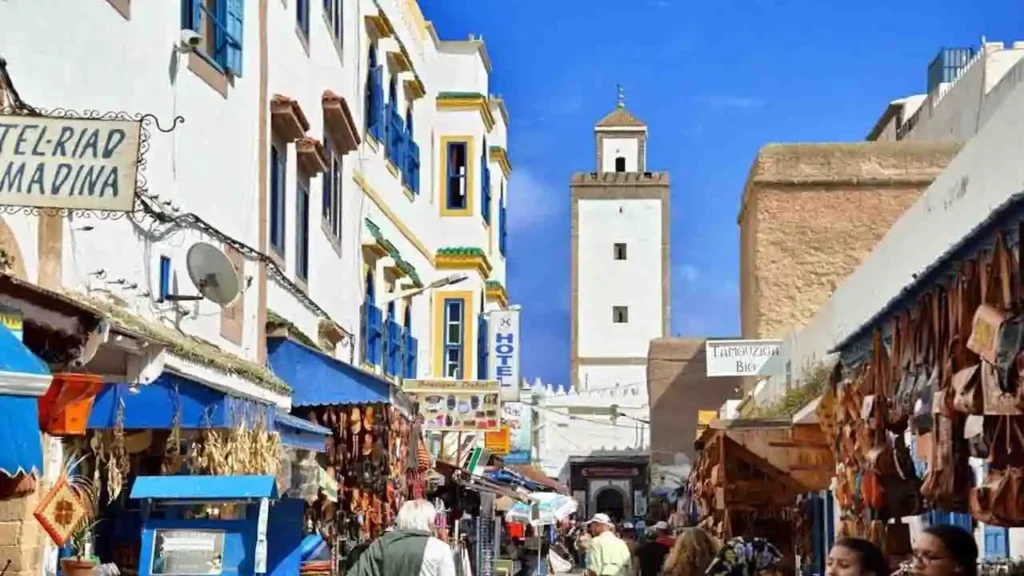
Essaouira’s souks don’t shout—they beckon. There are no frantic crowds, no merchants dragging you into their stalls. Instead, you drift—from one shaded alley to the next, the scent of cedarwood and saffron thick in the air, the distant clang of a blacksmith’s hammer echoing somewhere deep inside the medina.
Your fingers graze the edge of a Berber rug—handwoven, rough but warm, dyed in the deep reds and blues of desert sunsets. A jeweler leans over his work, twisting silver into delicate filigree, hammering patterns so intricate they feel like whispers in metal. In another stall, a woman scoops golden argan oil into a small glass vial, her hands moving with the practiced precision of generations.
The woodworkers here shape magic from thuya—boxes, chessboards, trinkets carved so smoothly they feel like silk beneath your fingertips. The spice vendors, their baskets brimming with deep reds, golds, and earth tones, crush herbs between their fingers, offering a scent before a price. “For tajine,” one says, handing you a mix of cumin, paprika, and something you can’t quite name. “Smell. You’ll remember Essaouira.”
And maybe that’s what makes this place different. It’s not just a market. It’s a memory, waiting to be carried home.
14. Visit an Argan Oil Cooperative
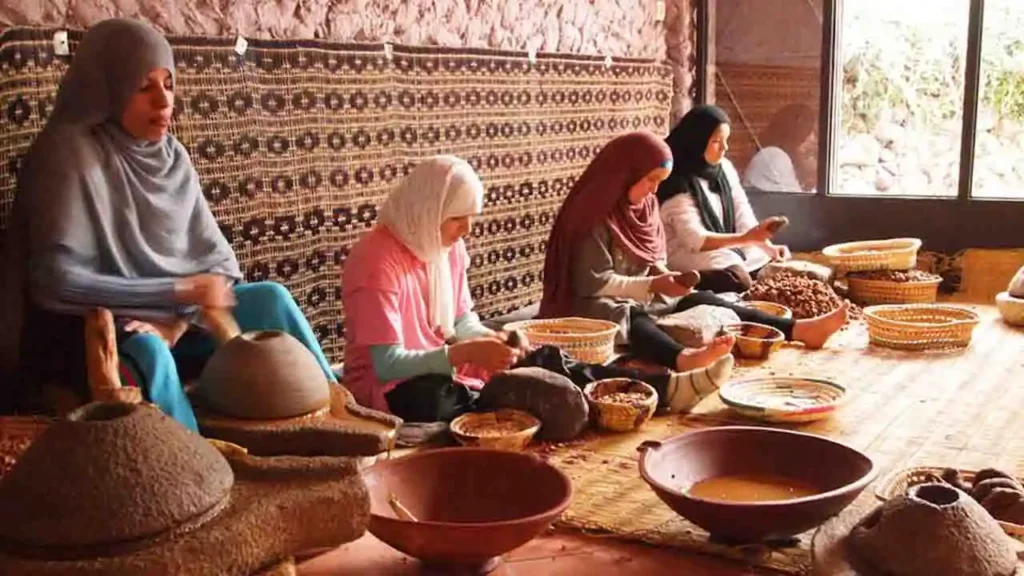
The scent hits you first—nutty, rich, faintly sweet. It clings to the air, seeps into the wooden beams, lingers on the hands of the women who have spent a lifetime extracting Morocco’s liquid gold.
Inside, time slows. Berber women sit cross-legged on woven mats, their hands moving in a steady rhythm—crack, grind, press. The argan nuts, hard as stone, are cracked open with smooth precision, revealing the kernels inside. A stone mill turns, creaking softly, transforming those kernels into thick, golden oil—drop by drop, patience pressed into every ounce.
This isn’t factory work. This is tradition, passed down like a story, a skill honed through generations. The women smile as they work, their fingers stained with oil, their voices weaving between Arabic and Tamazight, laughter slipping into the rhythm of the grind.
You dip your fingers into a small dish, rubbing a drop between your hands. Warm. Silky. Light, yet rich. A taste—nutty, pure, untouched by machines. The real thing.
Bottles line the shelves—some for cooking, others for skin and hair, each carrying the weight of history, labor, and time. You buy one, knowing it’s more than oil. It’s Essaouira, captured in amber glass.
15. Enjoy a Traditional Moroccan Hammam
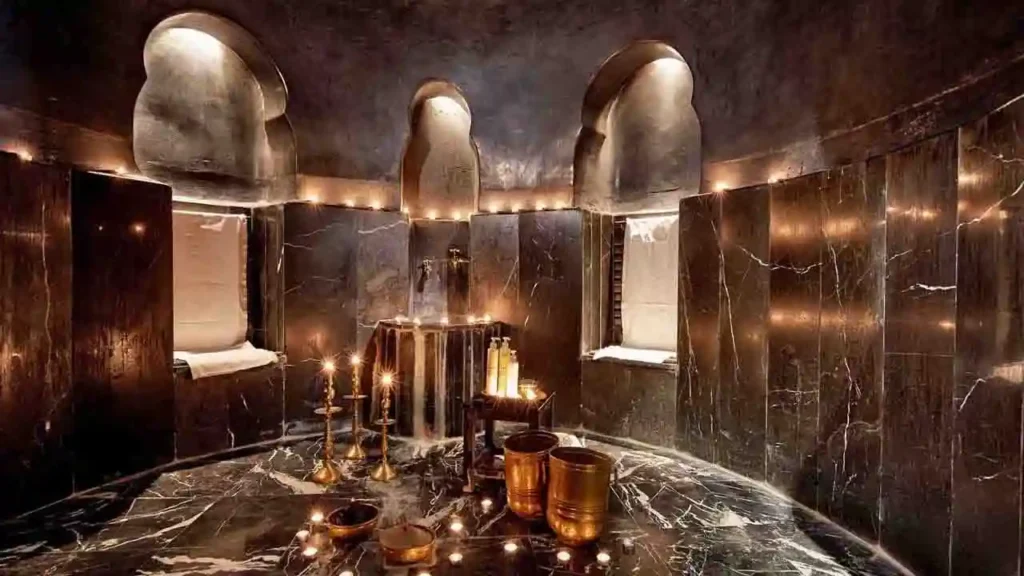
The door swings shut, and the world outside—the wind, the waves, the chatter of the medina—melts into silence. Inside, the air is thick with steam, dense with the scent of eucalyptus, orange blossom, and something older, something sacred.
You sit on warm stone, heat wrapping around you like an ancient embrace. Water splashes somewhere in the distance, voices murmur in low, hushed tones. Then—a bowl tips, and hot water cascades over your back, washing away dust, salt, time.
A woman or an old hammam attendant—skilled, no-nonsense, knowing exactly where tension hides—takes over. Black soap, rich and thick, is slathered across your skin. It seeps in, softens, prepares. And then—the kessa glove. Rough, relentless, sweeping away layers you didn’t even know you carried. Dead skin peels, rolls, vanishes. It’s not just cleansing. It’s renewal.
Another rinse, another dousing of water, another deep inhale of steam and citrus. You emerge fresh, glowing, light—as if Essaouira itself has stripped you down to something truer, something new.
Essaouira isn’t just a place you visit—it’s a place that stays with you. The rhythm of the waves, the scent of cedar and salt, the distant hum of Gnawa music drifting through the medina—they linger, tucked somewhere deep in memory, surfacing long after you’ve left.
You’ve wandered through the souks, felt the wind whip against the Skala’s ramparts, tasted fire-kissed seafood straight from the port. You’ve watched the sunset from the back of a horse, let the steam of a hammam cleanse more than just your skin. And maybe, just maybe, you’ve realized that Essaouira doesn’t move at your pace—you move at its.
Some places demand to be seen. Essaouira asks to be felt. And if you’ve truly been here, you already know—you’ll be back.
